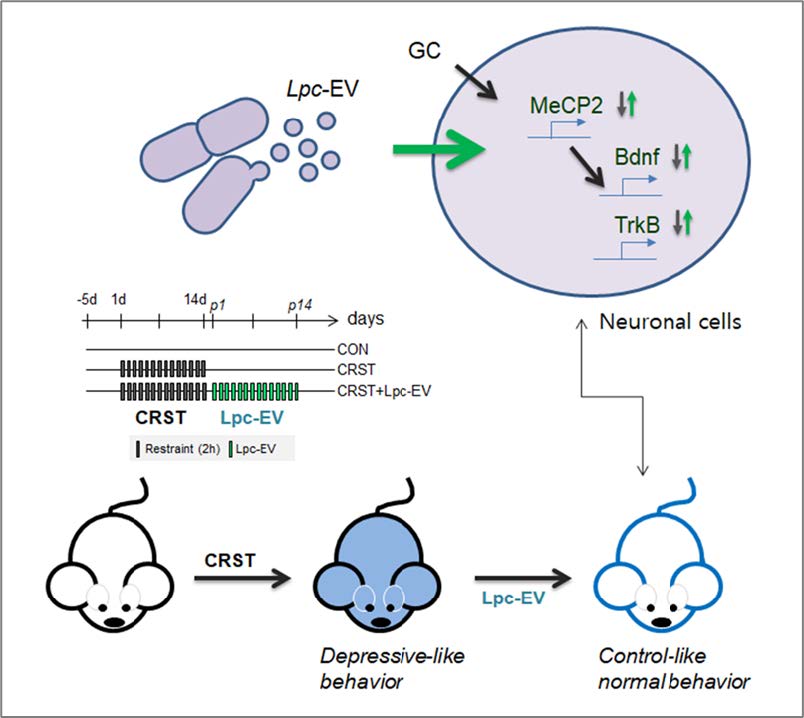Articles
Article Tools
Supplementary
Stats or Metrics
Article
Original Article
Exp Neurobiol 2023; 32(5): 328-342
Published online October 31, 2023
https://doi.org/10.5607/en23024
© The Korean Society for Brain and Neural Sciences
Extracellular Vesicles Released by Lactobacillus paracasei Mitigate Stress-induced Transcriptional Changes and Depression-like Behavior in Mice
Hyejin Kwon1, Eun-Hwa Lee1, Juli Choi1, Jin-Young Park1, Yoon-Keun Kim2* and Pyung-Lim Han1*
1Department of Brain and Cognitive Sciences, Scranton College, Ewha Womans University, Seoul 03760,
2MD Healthcare Inc., Seoul 03923, Korea
Correspondence to: *To whom correspondence should be addressed.
Yoon-Keun Kim, TEL: 82-70-7812-8065, FAX: 82-2-2655-0768
e-mail: ykkim@mdhc.kr
Pyung-Lim Han, TEL: 82-2-3277-4130, FAX: 82-2-3277-3419
e-mail: plhan@ewha.ac.kr
This is an Open Access article distributed under the terms of the Creative Commons Attribution Non-Commercial License (http://creativecommons.org/licenses/by-nc/4.0) which permits unrestricted non-commercial use, distribution, and reproduction in any medium, provided the original work is properly cited.
Abstract
Various probiotic strains have been reported to affect emotional behavior. However, the underlying mechanisms by which specific probiotic strains change brain function are not clearly understood. Here, we report that extracellular vesicles derived from Lactobacillus paracasei (Lpc-EV) have an ability to produce genome-wide changes against glucocorticoid (GC)-induced transcriptional responses in HT22 hippocampal neuronal cells. Genome-wide analysis using microarray assay followed by Rank-Rank Hypergeometric Overlap (RRHO) method leads to identify the top 20%-ranked 1,754 genes up- or down-regulated following GC treatment and their altered expressions are reversed by Lpc-EV in HT22 cells. Serial k-means clustering combined with Gene Ontology enrichment analyses indicate that the identified genes can be grouped into multiple functional clusters that contain functional modules of “responses to stress or steroid hormones”, “histone modification”, and “regulating MAPK signaling pathways”. While all the selected genes respond to GC and Lpc-EV at certain levels, the present study focuses on the clusters that contain Mkp-1, Fkbp5, and Mecp2, the genes characterized to respond to GC and Lpc-EV in opposite directions in HT22 cells. A translational study indicates that the expression levels of Mkp-1, Fkbp5, and Mecp2 are changed in the hippocampus of mice exposed to chronic stress in the same directions as those following GC treatment in HT22 cells, whereas Lpc-EV treatment restored stress-induced changes of those factors, and alleviated stress-induced depressive-like behavior. These results suggest that Lpc-EV cargo contains bioactive components that directly induce genome-wide transcriptional responses against GC-induced transcriptional and behavioral changes.
Graphical Abstract

Keywords: Extracellular vesicles, Lactobacillus, Transcriptional responses, Stress-activated genes


